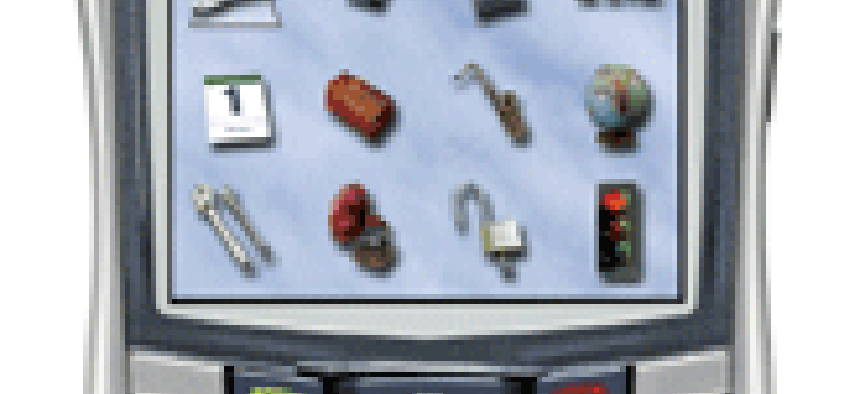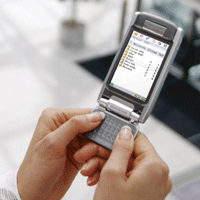Handhelds rival laptops ?but choose carefully

Who would have thought the day would come when laptops would seem too big, and phones not useful enough?
Who would have thought the day would come when laptops would seem too big, and phones not useful enough? But that's precisely why handheld PCs have become so popular among mobile workers. The devices combine the data-gathering and data-transmitting capabilities of a personal digital assistant with the voice capabilities of a cellular phone. For many agencies, handhelds are becoming the tool of choice.The attraction lies in having the features you need combined in such a small package. The devises' data input methods vary. Some offer small, built-in keyboards ? in QWERTY, ABC and other layouts. Others have touch screens for making selections with a fingertip or stylus. A few offer handwriting recognition. Many permit combinations of all three. In addition, some devices include a camera ? either still or digital video. Different models run applications of varying sophistication. Any that permit Internet access include a browser, either rudimentary or full-featured. All include calculators, contact lists for names and phone numbers, calendars and to-do lists.Viewers for many document and image types are available. Simple applications, like a notepad, are common. A few even offer miniature versions of office applications like Microsoft Word and Excel. Downloading and installing additional applications, either commercial or homegrown, is possible.Data storage is provided by solid-state memory, which can range from a few dozen megabytes to gigabytes of space.Battery life is a prime consideration. Depending on use, batteries can last from hours to days. Rechargeable specialty batteries are common, although some will work on ordinary AA batteries, and nearly all accept AC adapters.Manufacturers realize that these devices are adjuncts to desktop computers and networks, so every effort is made to provide multiple ? and simple ? interfaces. Wireless technology lets handhelds easily connect with computer networks, as well as with devices such as printers, mobile phones, Global Positioning System receivers, keyboards and other handhelds.It's also possible to access the Internet through agency wireless networks and hot spots in hotels, airports and other public places. This isn't a pokey connection either: Data can move on the order of 11 Mbps.The two principal wireless technologies are Bluetooth and WiFi. Many handhelds also offer infrared ports, usually used for rapid synchronization of small amounts of data. Some also include a USB port.[IMGCAP(2)]Phone capabilities draw many users to handhelds. Some function as full-featured mobile phones with speakerphones, hands-free dialing, and all the bells and whistles. On the opposite end of the spectrum are those that aren't phones but do offer a phone interface, letting it serve as a modem.The small form factor of a handheld is significant. All fit into the hand ? less than 6 inches long, 3 inches wide and an inch thick ? and weigh only a few ounces.By comparison, laptop computers can be bulky and awkward, as well as more expensive to buy and support. Finally, almost no laptops offer phone capabilities ? a big reason handhelds supplant laptops in many situations.Handhelds are ideal for any application that requires both data input and voice usage while on the move. Falling into this category are many government field workers and others, such as building inspectors, caseworkers, social service agents and nurses.Police, firefighters and emergency medical personnel also find handhelds valuable. They can take notes, record visual images and even log spoken remarks at the scene. Transmitting data can be fast and simple.Usability is an important consideration in selecting a handheld. You don't want a keyboard that's too tiny for a worker's fingers or a device that lacks an essential phone function.Electrical power also is important. Mobile users tend to be away from the office ? and electrical outlets ? all day. The handheld's power consumption should support that style of use.This is especially important for heavy phone users, because cellular connections can suck battery power. The optional heavy-duty batteries offered by some manufacturers may be the most important feature for such users to consider.Think about the kinds of connections you want your handheld to make. Just to your desktop? To the network as well? Or do you want to take advantage of public hot spots with wireless connectivity?Many workers use their handhelds in conjunction with desktop machines. The closer the match between the two, the better the synchronization. Interfacing should be easy, because users are going to be doing it thousands of times. Also, handhelds with standard, not proprietary, data formats and interfaces in the long run will simplify life.Some handhelds let users download and install applications. Others have a preloaded set of applications you can't change. The ability to expand and upgrade can be important.Finally, although a single handheld model for an agency can simplify purchase and support, one size does not fit all. Handheld preference is a personal thing: One worker's dream keyboard may be another's obstacle. If possible, try to offer workers several compatible models and let them choose. After all, it's their hands holding the handheld.

 Make sure the feature pack matches users' needs
Make sure the feature pack matches users' needs
Edmund X. DeJesus of Norwood, Mass., writes about IT.

Sony Ericsson's P910, ranging from $500 to $799, comes with a QWERTY keyboard and a full-function phone.

RIM's BlackBerry 7100t has wireless connectivity options, phone support and, with T-Mobile rebate, costs $199.
Edmund X. DeJesus of Norwood, Mass., writes about IT.

